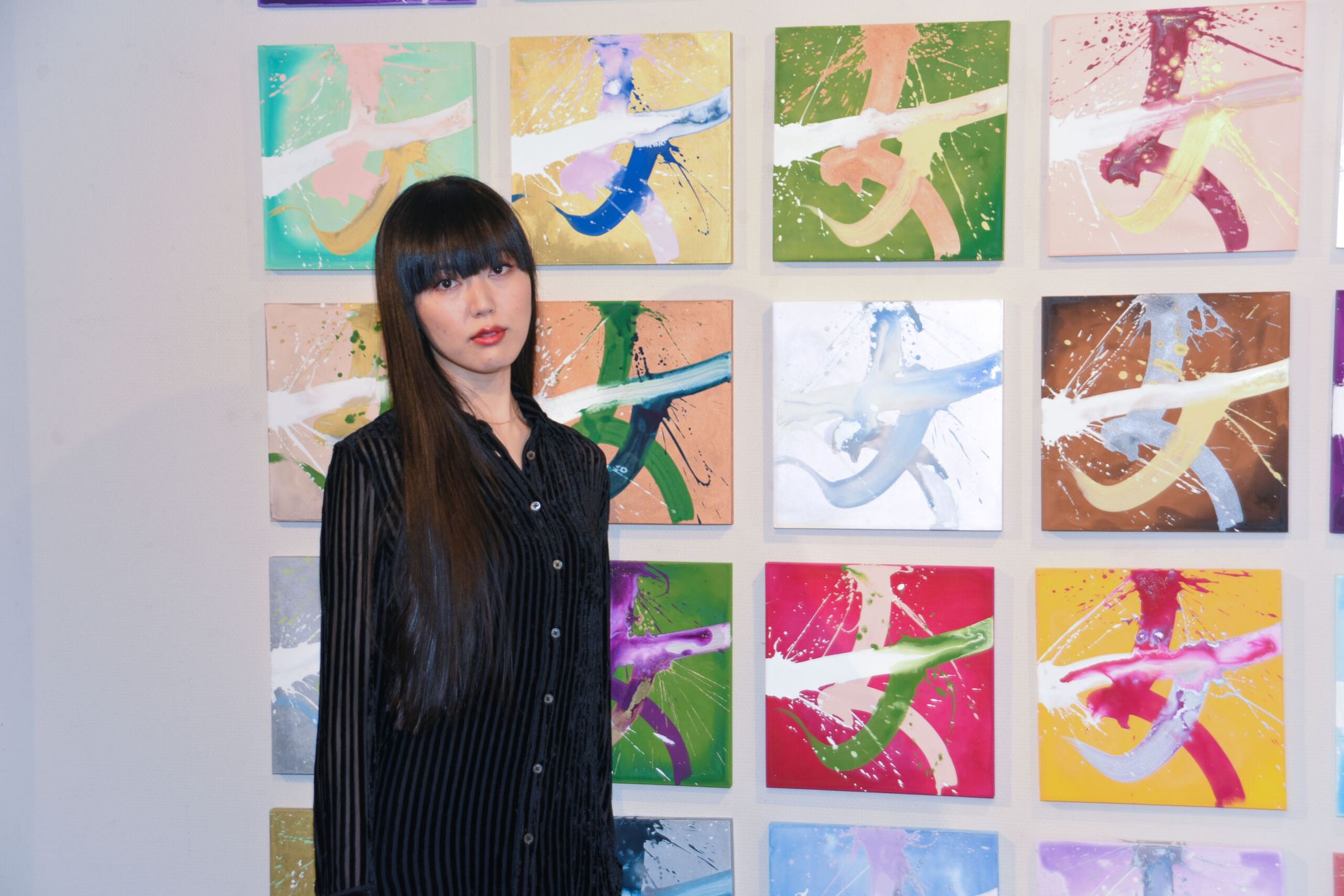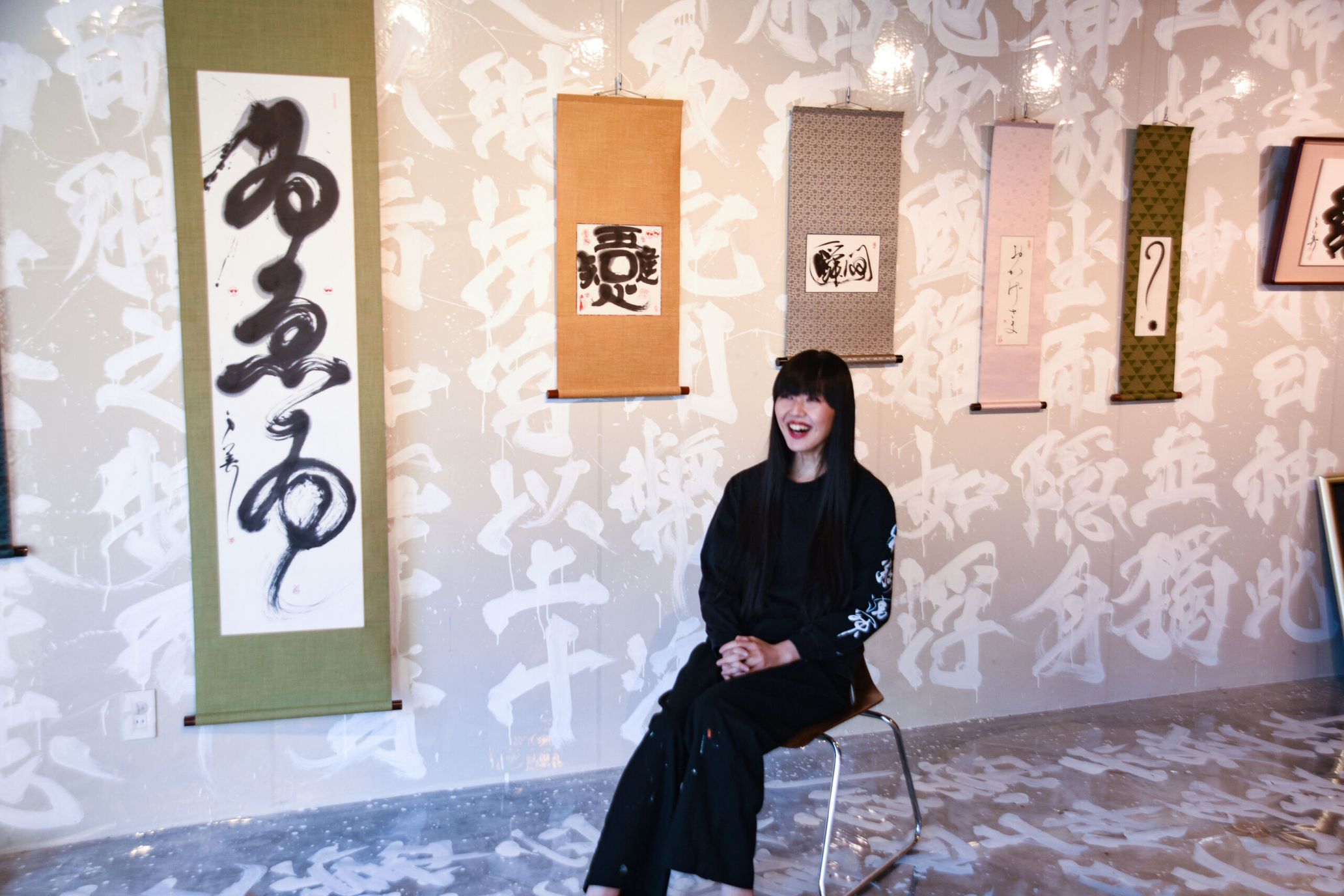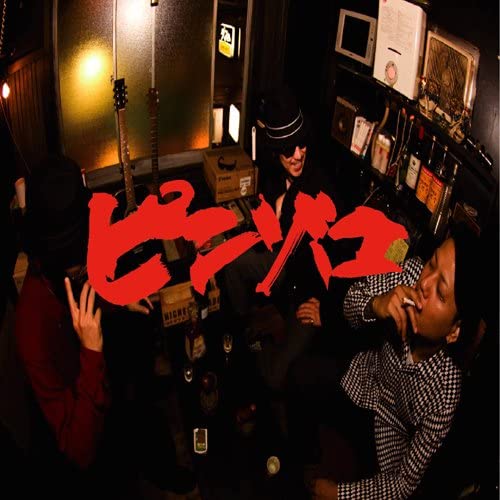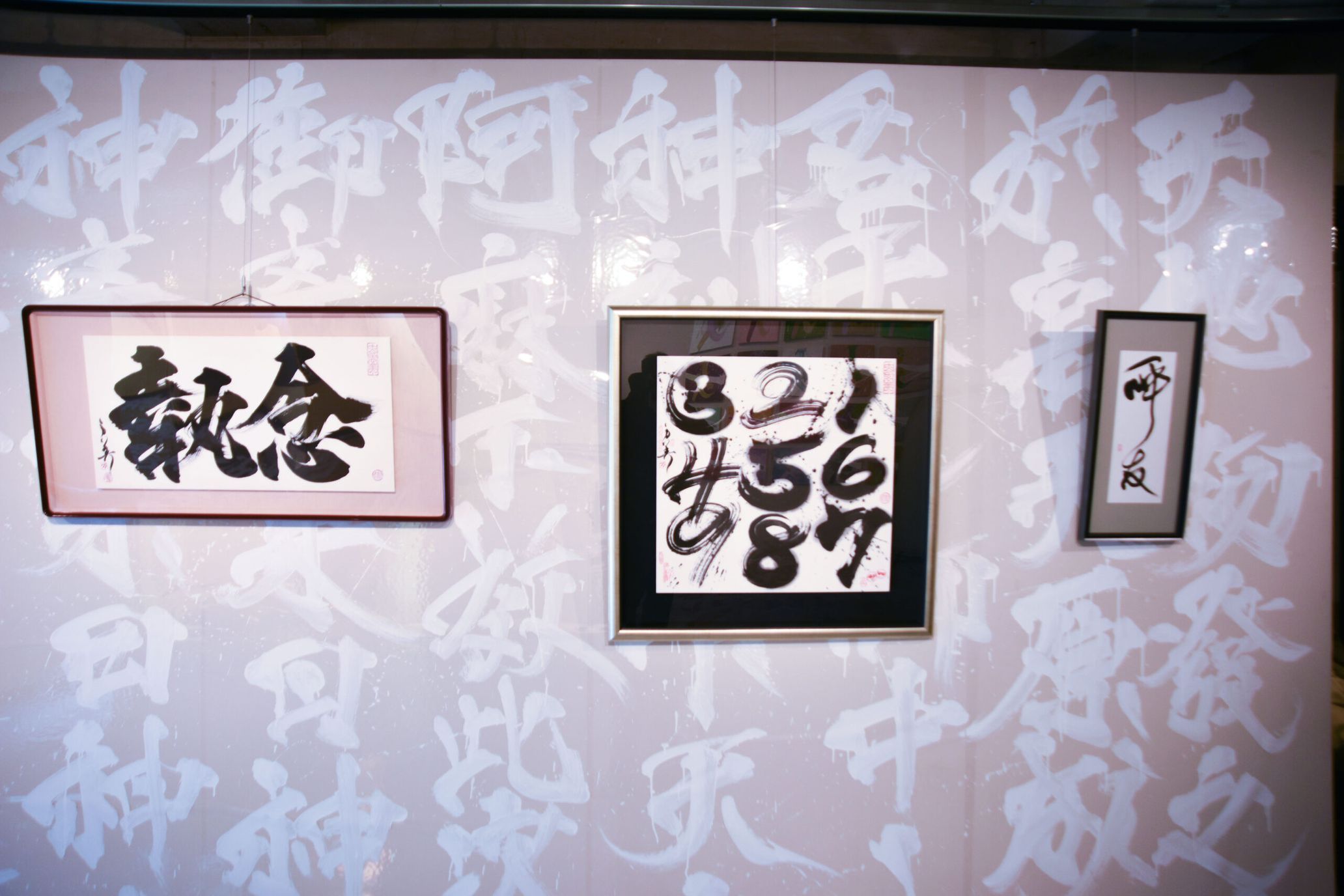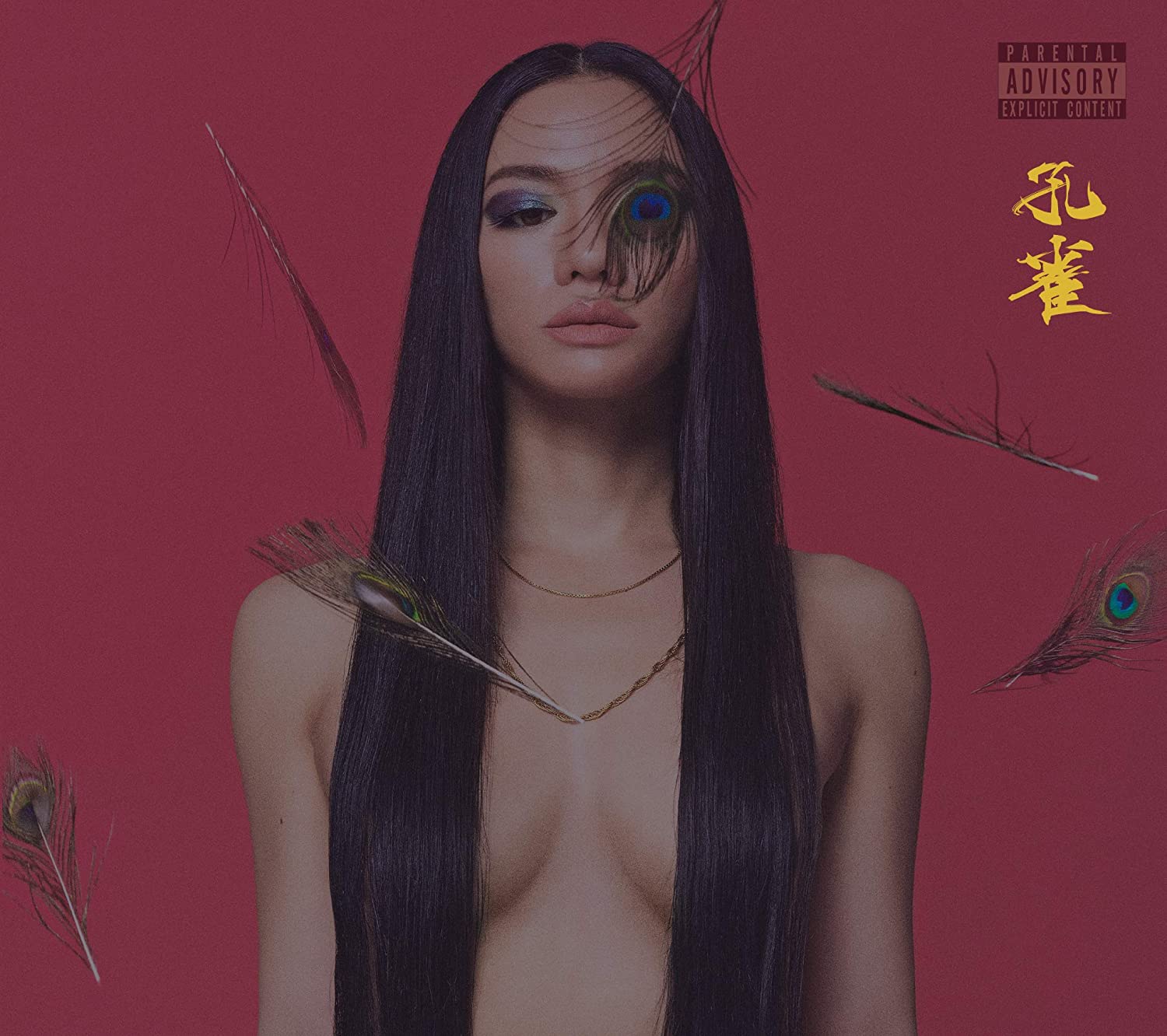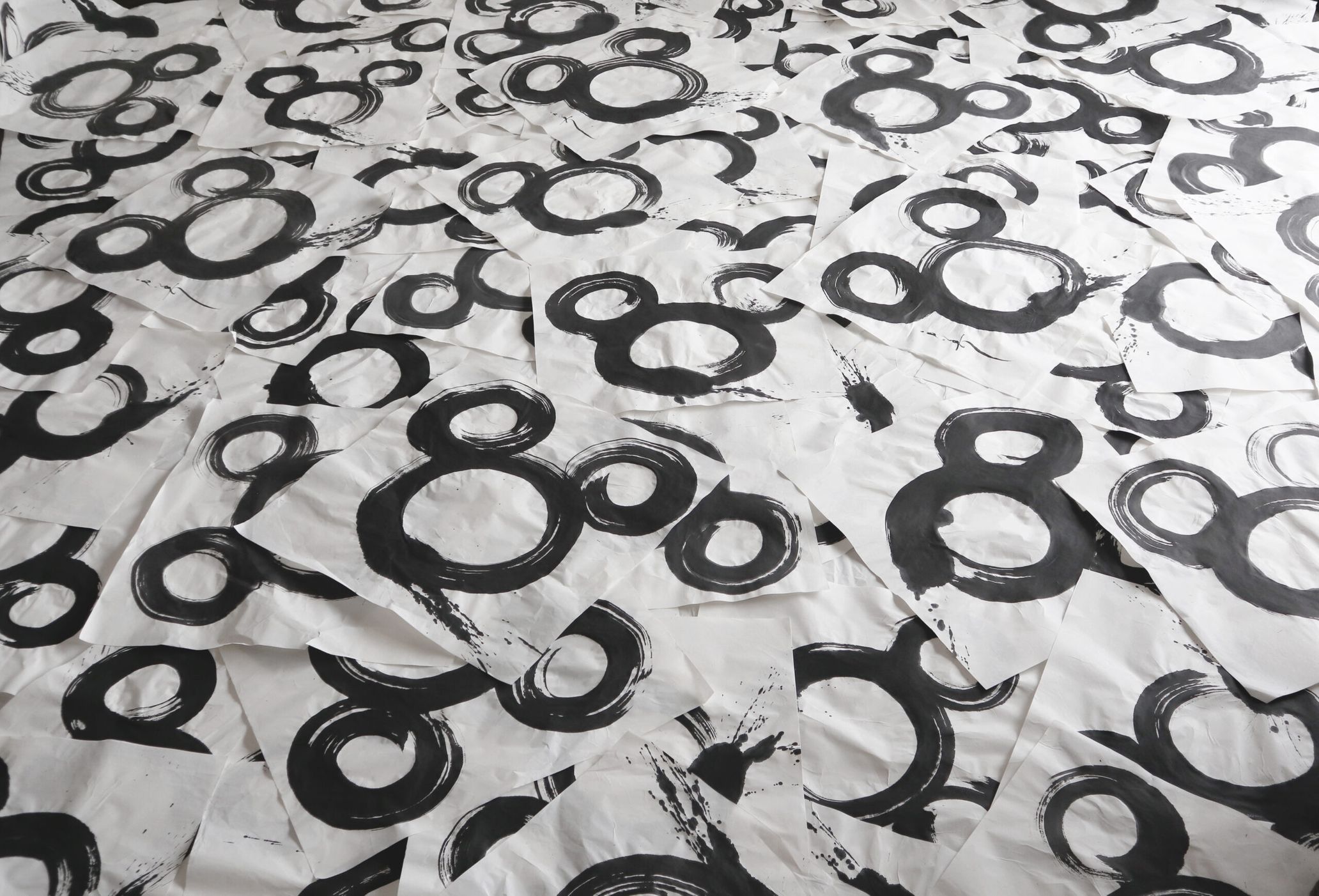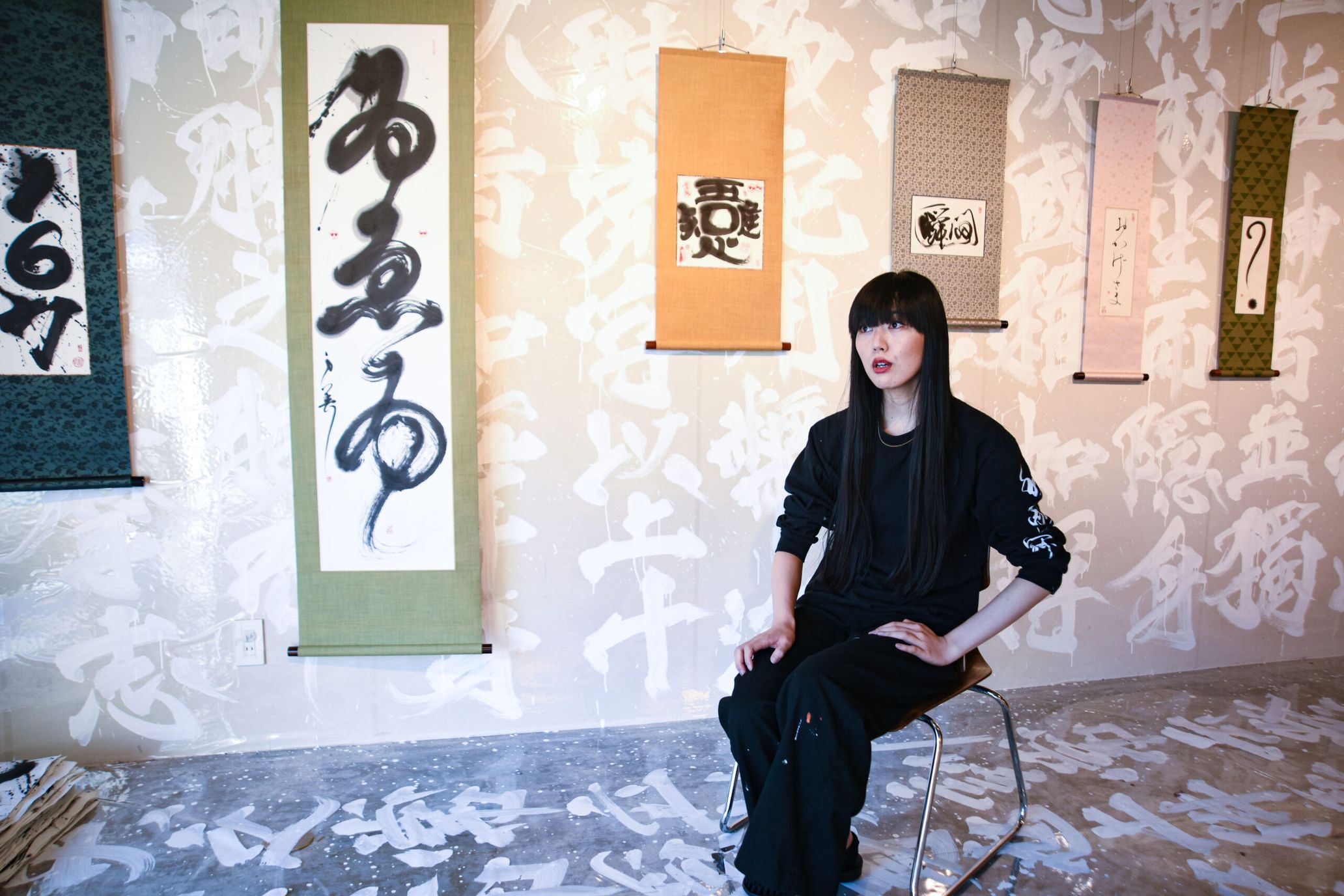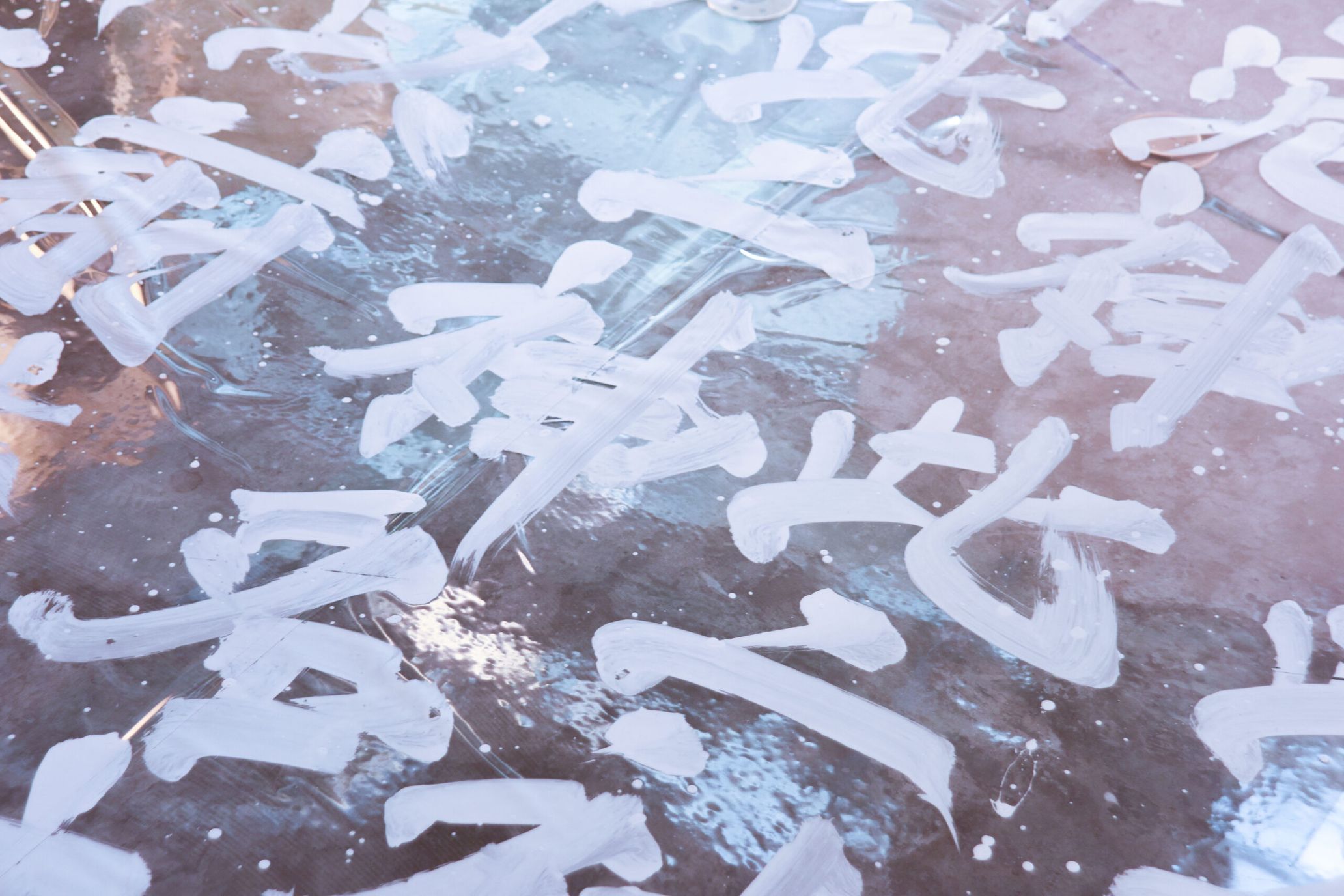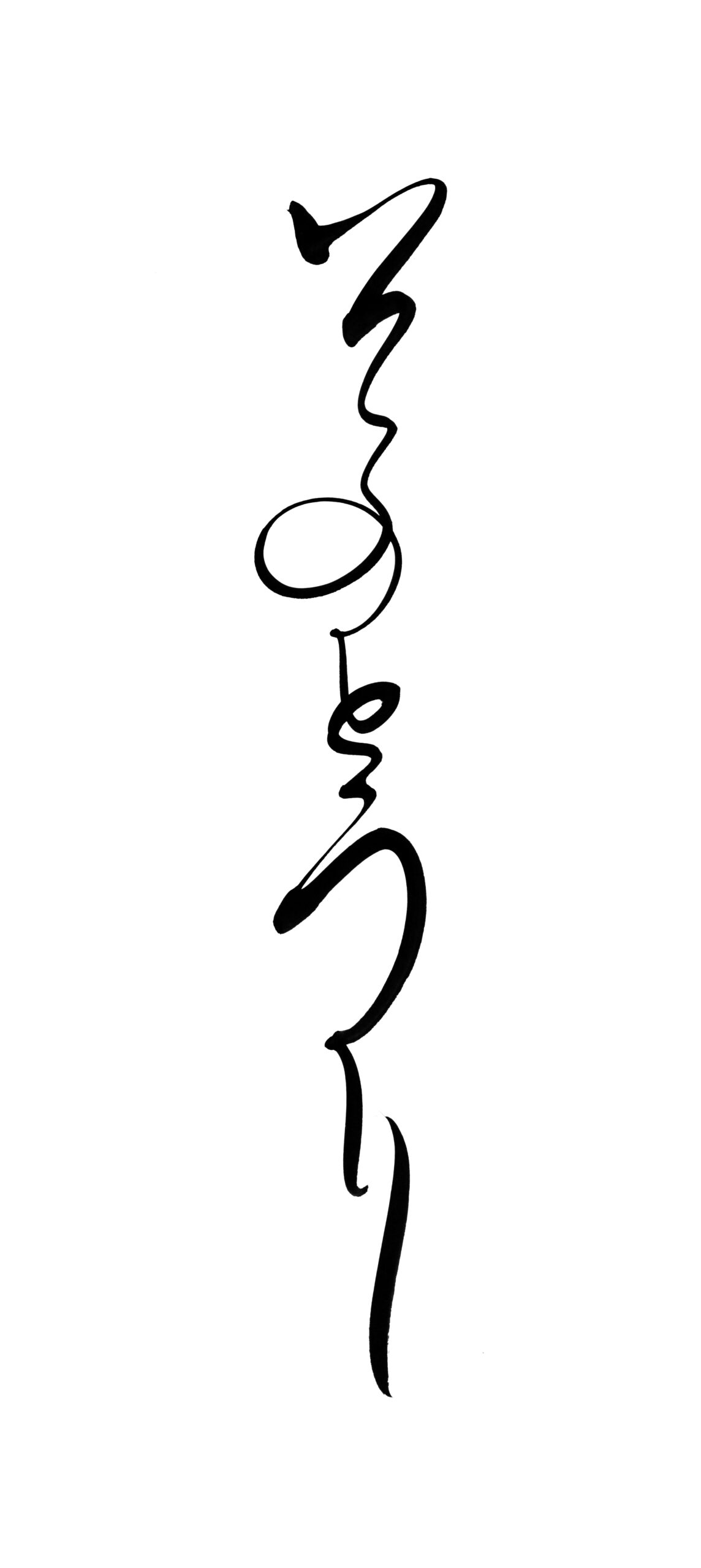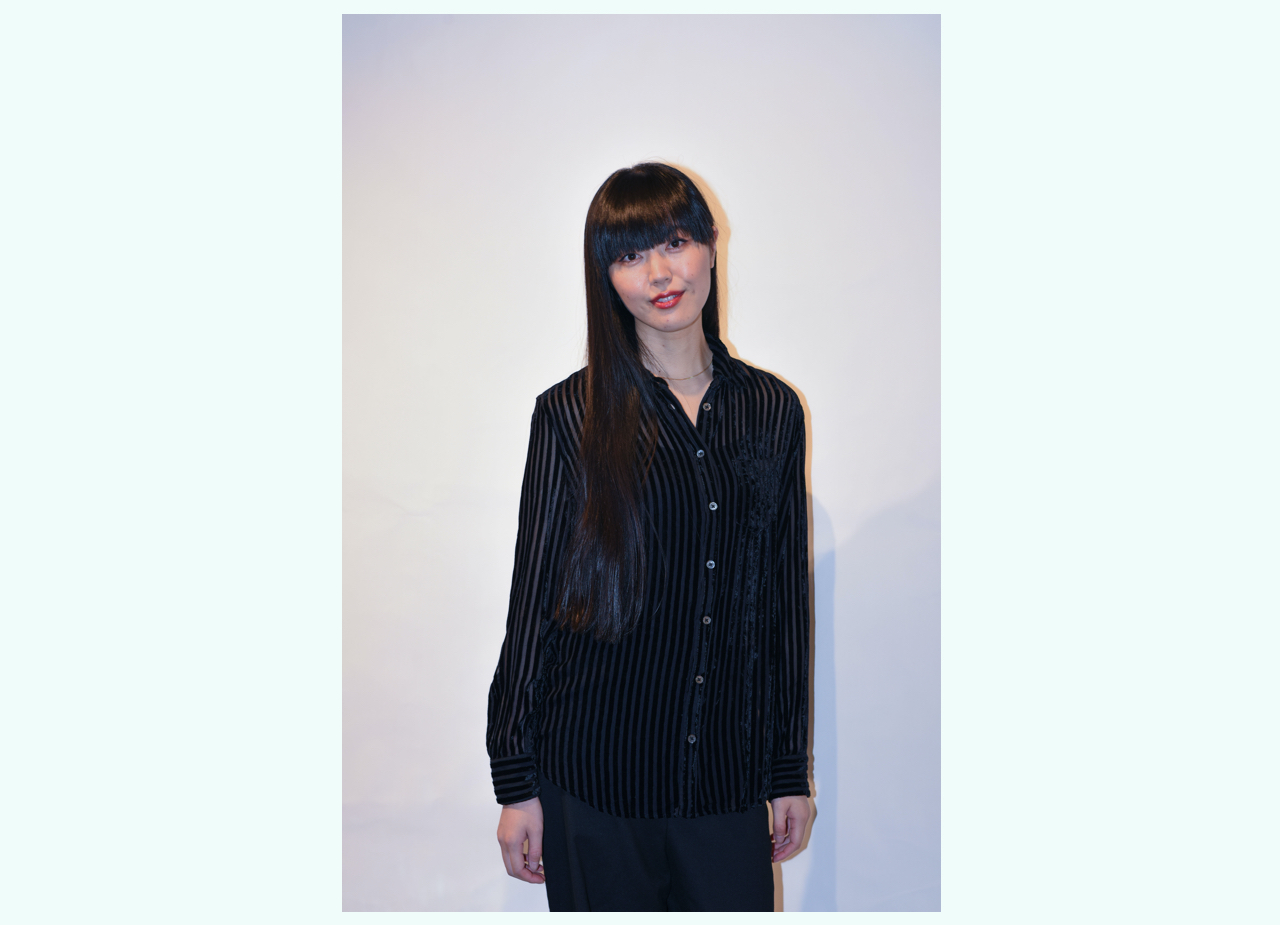Mami is a sought-after calligrapher receiving incessant offers from clients in Japan and abroad. She provides works to a wide variety of clients from global brands, Hip Hop artists for their CD covers, to locally-owned restaurants. However, she mentions that all her multifaceted works are rendered based on a single philosophy.
Her independent exhibition, MAMIMOZI was held at STUDIO 4N in Daikanyama. The showcased works are calligraphies transcended into familiar yet evocative art—So, what is calligraphy and art to the artist herself? We look closely at the artist, who slays with client works while working on her own projects and pursuing what she likes.
Paving my way as a calligrapher
――When did you start thinking about becoming a calligrapher?
Mami: I’ve been learning calligraphy since I was little, but I became interested in becoming a calligrapher in high school and moved to Tokyo to study calligraphy in college. I was trying to make money for my tuition and rent not just by part-time work but also with calligraphy—I got my first client work in college.
――What was your first client work?
Mami: The first client work I did was for a CD cover art of a Hip Hop artist. It was for Pinzoro (a three-piece band helmed by rapper Oni)’s album, titled P.P.P, and I wrote “ピンゾロ (Pinzoro)” in katakana.
――And how did you get the offer? Did you and Oni know each other?
Mami: No, I didn’t know Oni at all. I’m essentially a huge fan of Japanese Hip Hop and own a lot of CDs. I’d noticed that there’s an ULTRA-VYBE logo on many of the records, and so I looked up and found out that it’s a record company. Since they have so many releases, I thought I could work on some of their covers and emailed the company directly. Then, three months later, they responded to my email and commissioned me.
――How did you feel when you got the offer?
Mami: I was so surprised! I was like, “Do they mean that Oni!? Seriously!?” [Laughs]
――And that was back in 2009–What have you been up to after that?
Mami: Ever since I did the cover art, other rappers started recognizing me, and I did the cover art and event flyer for Kitsunebi and got further connected to the scene I’ve always admired.
――When you started your career as a calligrapher, did you often have to pitch yourself to get commissioned as you did with P.P.P?
Mami: Yes, back then, I went up to people and asked around if they were interested in my works. Since I began thinking of making money solely with calligraphy, I stopped being picky and worked with whatever I could. But to be honest, it always worked better when I carefully chose who to work for. I didn’t get much response when I threw emails like, “Please use my work however you like.”
――Now, you work with artists like DJ MURO and Awich, and global brands like Shu Uemura and Fujitsu—Do you change the calligraphy style depending on the client?
Mami: The zeal is always there for every work. When working on a CD cover, I listen to the rough demo first to immerse myself in its worldview. And for corporate works, I do research on the company to understand their philosophy before getting into work. It’s crucial to understand the clients. Recently, when I collaborated with the manga series Baki the Grappler for their 30th-anniversary project, Heterogeneous Creative Battle!, I drew feeling like I was the character Kaoru Hanayama. [Laughs]
――The Mickey Mouse Exhibition: THE TRUE ORIGINAL & BEYOND in 2020 was remarkable. You showcased ZEN Mickey, combining three circles in a Micky Mouse figure, and presented it as a global word. And you placed a pile of hundreds of the same calligraphy pieces below the ZEN Mickey Kakejiku (hanging scroll.) Seeing the installation made me realize you churn out many pieces, although usually, we only see one.
Mami: I only show one, but ultimately, they’re chosen out of the countless pieces I draw. I drew 220 pieces for ZEN Mickey, but that’s not a lot for me. The viewers wouldn’t know that I write so many of the same things for a single piece. Usually, people just see what’s exhibited, but there’s a laborious process behind it. So for that exhibition, I showed all the ones I wrote to represent the significant amount of time consumed to create each piece. During the production period, there were times when I was in the mood and times when I wasn’t in the mood. Depending on the day, there were days when I wrote tens of pieces in a day, but there were also days when I couldn’t write at all.
――How do you know when you are in the mood? Is there a way to rev yourself up?
Mami: There are times when I misread myself and think that I’m in the mood, but it turns out I’m not. There’s also the other way around—there are times when I’m not feeling well but force myself to work anyway and happen to do a great job. It would be best if I could justi control the conditions of the brushes at all times.
Thriving through providing works to clients in different fields
――This is going to be a basic question—How do people judge if the calligraphy is good or bad?
Mami: I think it depends on the person if they do calligraphy or not. There’s a lot you wouldn’t know if you’ve never done calligraphy. It’s too technical, like the spaces between words and the chemistry between ink and paper. But those who aren’t familiar with calligraphy tend to resonate more when they see words they know better than unfamiliar words. So, working with different industries, I struggle with the gap between the artistic judgment in the calligraphy world and the artistic judgment in other fields. It’s a challenge I grapple with even to this day.
――How do you convey the uniqueness of each character?
Mami: I’m still trying to figure it out, but there’s a distinctive style to the characters I write. I call it “my smell,” and that smell can’t be erased even if I wanted to. But, thanks to the indelibleness, people can tell that it’s my work. I used to resent that smell of mine, but now I’m happy with it.
――Do you ever think about emphasizing the smell?
Mami: Well, I don’t think it’s right just to make the smell stronger. There are works I intentionally put out my smell, but it appears ostentatious if I do it too much. A subtle smell is fine, but I don’t want it to reek.
――By the way, do you change the amount of smell you infuse in for client workyou’re your original work?
Mami: I’ve never thought about it, but now I realize that my original work becomes more straightforward after putting out my personality in client work. And there’s also the other way around—after working with specific orders from a client, I tend to go full-on with my style for my original work. Most of my clients give me the freedom to be creative, which I enjoy a lot. Sometimes, I struggle with it, but there’s never any stress.
――Not just for the major corporates, but you’ve also done signages for locally-owned restaurants.
Mami: Simply, I like eating. [Laughs] I often go out to eat at restaurants where I’ve done their signages. I only do signages for restaurants I think are delicious.
――So, like the way you only draw CD covers for your favorite artists, you only do signages for your favorite restaurants.
Mami: I’m happy to draw anytime for my favorite artists, restaurants, shops, brands, and anyone I’m proud to present.
――What influence does client work have on you?
Mami: When I get unexpected demands from clients, I think hard and contrive ways to achieve them, and that leads to expanding my potential. So, I like doing client work, and I think it’s imperative for my career.
――Ideally, how do you want to work as an artist?
Mami: I enjoy doing client work, which has become the mainstay of my artistic career, and I learn a lot from it, so I want to continue that while drawing whatever I like to be the main thing. I want to live like the rappers singing freely about their lives. I want to deepen my knowledge and hone my way of expression through client work and enhance the quality of my original works.
Continues to Part Ⅱ
Mami
Mami is a Calligrapher from Yamaguchi prefecture. She started calligraphy at 9. She is influenced by Hip Hop culture and collaborates with DJs and rappers, drawing for their CD covers and live events. Today, she doesn’t limit herself to a particular genre and provides works to worldwide corporates. Her exhibitions are held mainly in Asia, but she attracts attention from all over the world.
Instagram:@mamimozi
Photography Cho Ongo
Translation Ai Kaneda

